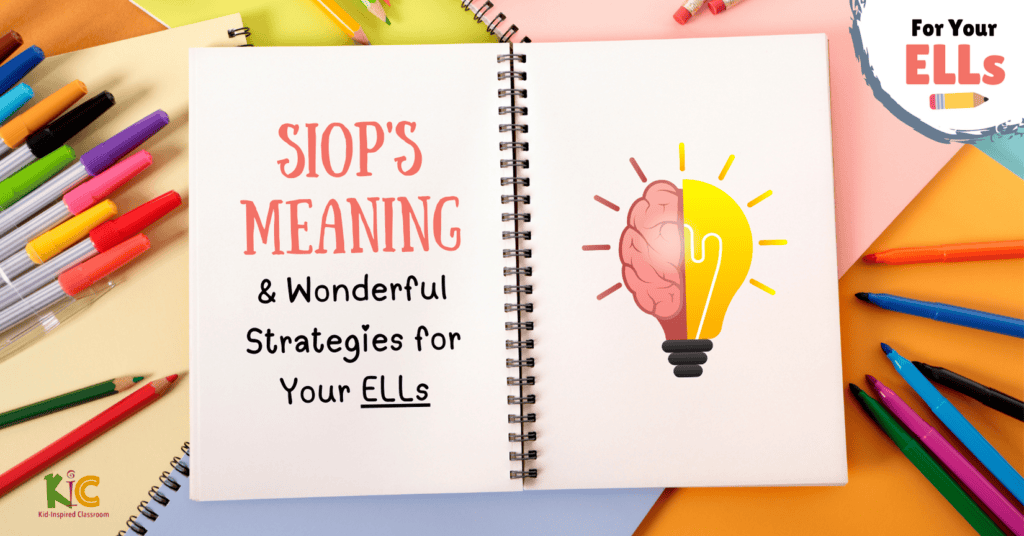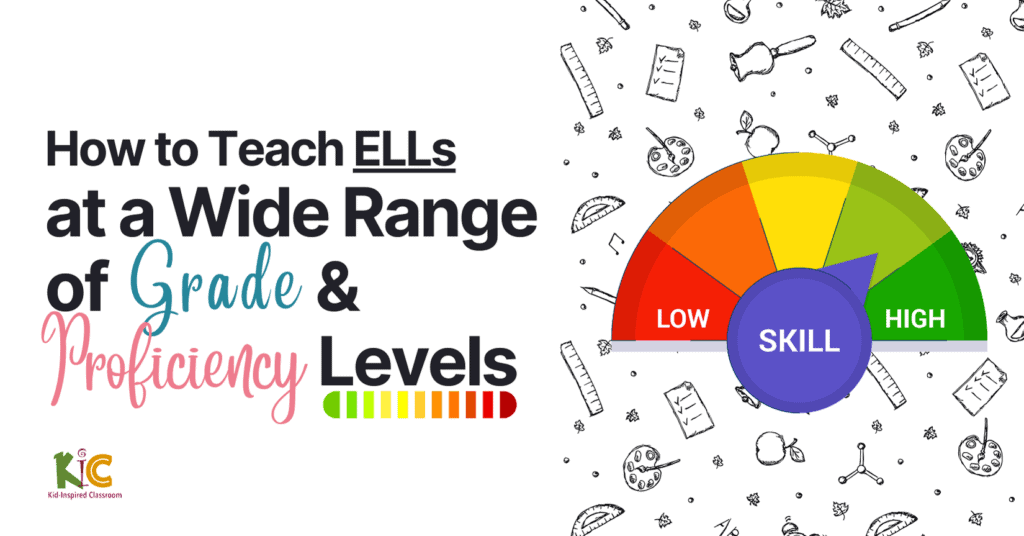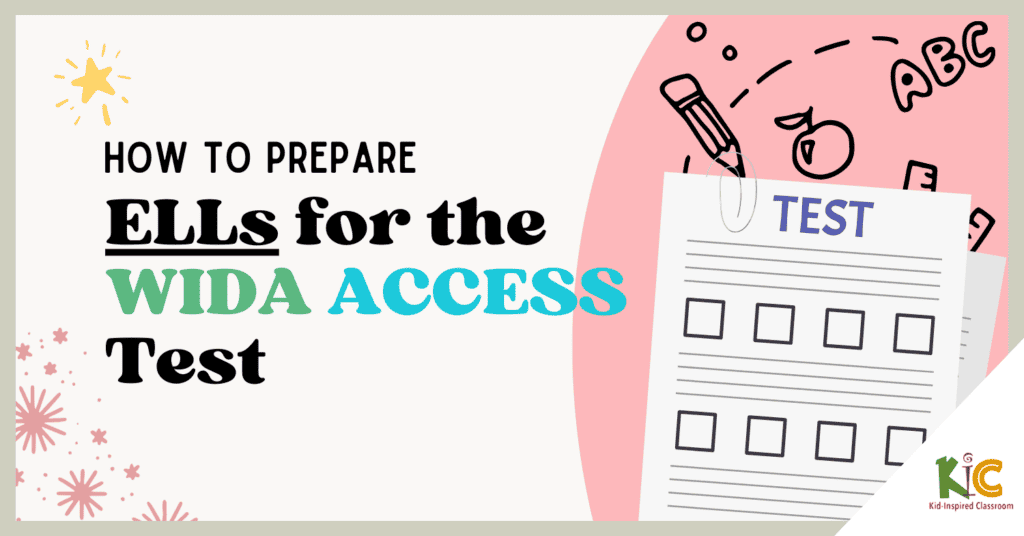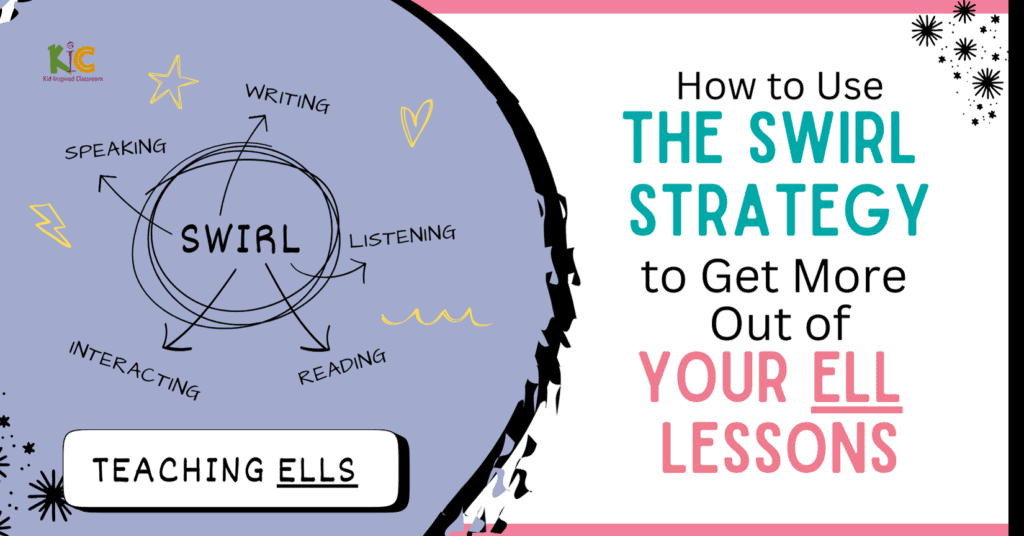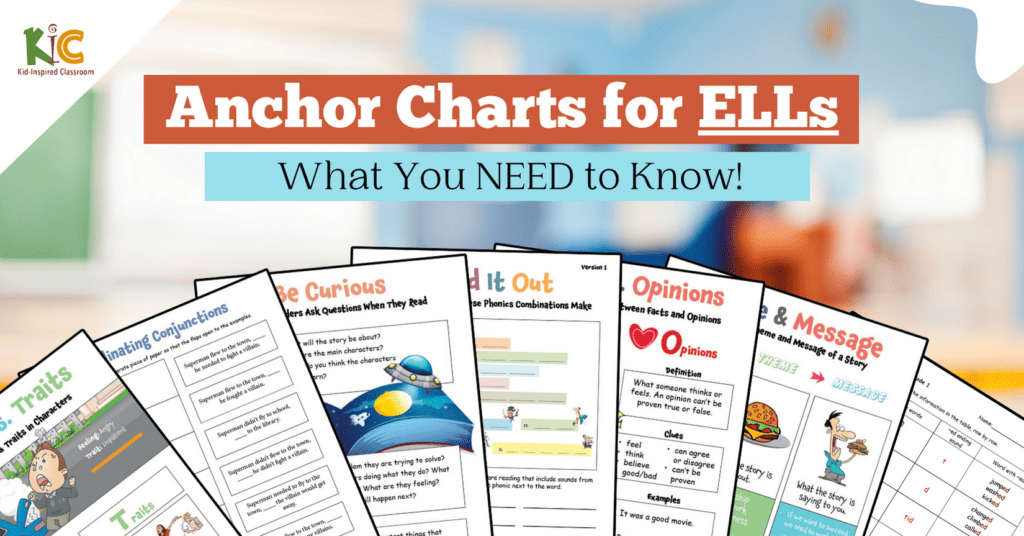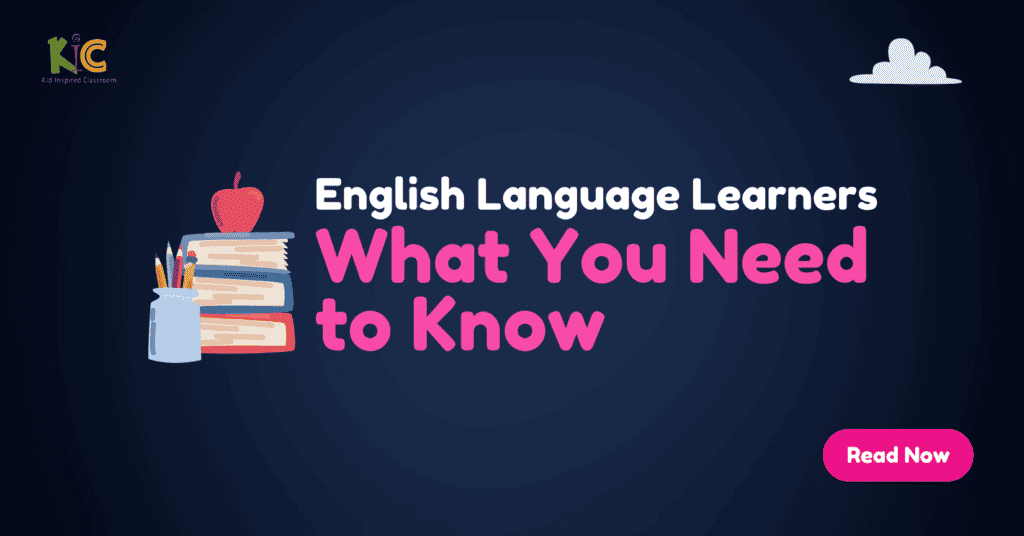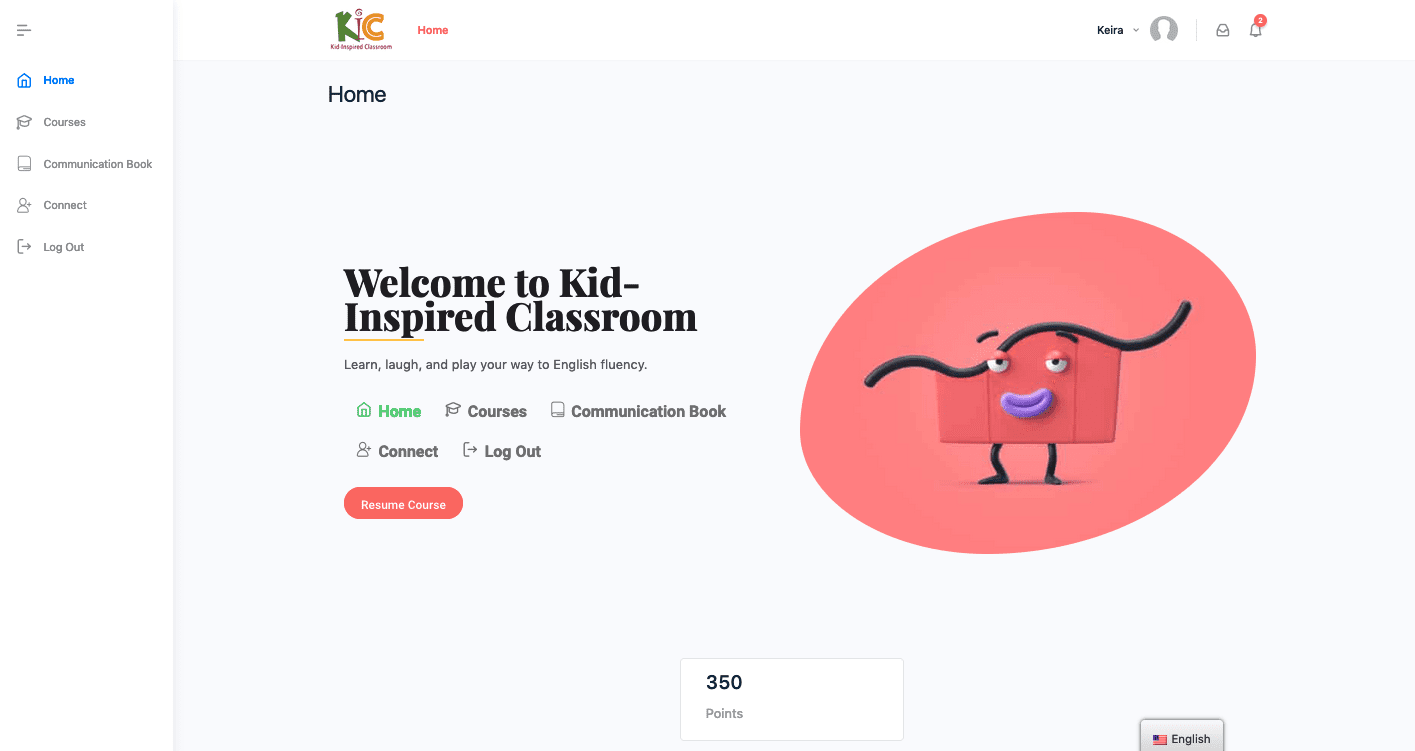
In this article…
- Why we need to routinely model academic language.
- How to Lesson Plan and Assess Academic Language Use
- Examples of Academic Language to Teach
- Resources for Teaching Academic Language
- Grab a free Sentence Stem Lesson Plan and Discussion Resource ->
Why is Academic Language Important?
Academic language is a key factor if you want your English learners to succeed in school.
In schools, especially at higher levels of education, people speak differently.
They use words and sentence structures that differ from the way families generally talk at the breakfast table or friends talk at the park.
That means we can have students who sound fluent in English, but struggle academically due to their lacking academic language proficiency.
How Can Academic Language Usage Be Modeled Routinely in the Classroom?
Since academic language is important to our students’ success, how can we help them grow more proficient at it?
Simple.
Get them using it a lot.
Alright. Maybe not that simple.
Our English Learners may not be particularly interested in learning academic language since it will likely do nothing for their social lives. That means teaching our students academic language can be an uphill battle.
That means teaching our students academic language can be an uphill battle.
It doesn’t have to be as difficult as we might first imagine though if we meet the following criteria:
- Model Academic Language Routinely
- Make Using Academic Language Rewarding

We model academic language first by using it ourselves when we teach.
Often, when teachers teach English learners, they simplify the way they speak in order to help their students understand them better.
There is absolutely nothing wrong with that…
…unless you stop using grade-level, academic language altogether.
We need to continue using academic types of language. We just need to be aware of how we’re using it.
- Not willy nilly.
- Not in a torrent of words strung together with little time for processing or interaction.
- Not with a writing assignment at the end that students haven’t properly prepared for.
We need to work in intentional academic words and structures into our lesson plans and use a select few structures repeatedly throughout the class, giving the students the opportunity to practice the structure repeatedly in different ways.
We also need to make using academic language rewarding. This can be done in a variety of ways as well.
2 Strategies to Make Using Academic Language Rewarding:
Strategy 1:
Interest grows out of confidence.
The better our students feel when they use academic language—the more confident they feel about using academic language—the more rewarding it will be for them and the easier it will be for you to get them using it more.
So…
Celebrate each and every attempt students make in using academic language.
Strategy 2:
You can also gamify the use of academic language by making a list of words or structures you want to hear during class.
You can reward points to students or their groups each time you hear anything from the list.
Points can be used to buy free homework passes, game time, a class dance minute, etc. Tip: Letting students buy rewards that the whole class benefits from is a great strategy.
How Can Lesson Planning and Assessment Support Academic Language Development?
That brings us to our lesson plans and assessments.
- How can we intentionally plan academic language into our lesson plans?
- How can we intentionally assess students on their academic language growth?
First…
1. When we’re writing our lesson plans, we need to set clear language objectives for a class.
Language objectives are fairly straightforward:
What specific academic vocabulary and structures do I want my students to have mastered by the end of a particular lesson?
But!
Notice the most important part of that last sentence: “by the end of a particular lesson.”
Our goal is not to throw in everything except the kitchen sink.
Our goal is to choose specific and manageable words and structures that we can reasonably expect our students to be able to master in one particular class period.
That may mean we have to throw a few things out of our lesson plans in order to focus only on what’s going to make the biggest difference.
Next…
2. We need to assess student progress with the academic language we’ve been practicing.
We should be doing this each and every class.
Set the students a challenge that they need to complete by the end of the lesson.
- Speaking Challenge: Say the target academic language we’ve been practicing during this lesson with me one-on-one.
- Writing Challenge: Once they have shown they can say the words and structure(s), then you can have them write their response.
Writing is far more difficult, so do not jump the gun and ask students to write it before they’ve shown you they can speak it.
Writing is far more difficult, so do not jump the gun and ask students to write it before they’ve shown you they can speak it.
Once they’ve said it to you, you can trust that they understand. Then if they struggle with the writing, it will likely be because they are struggling with the spelling.
What Are Some Academic Vocabulary Words That Need to Be Taught?
Here are some examples of the types of words and sentences you can start putting into your lesson plans.
The following words are often used in discussion or reading comprehension questions:
- discuss
- compare and contrast
- infer
- debate
- classify/categorize
- describe
- elaborate
- identify
- predict
- sequence
- state an opinion
We also need academic sentence structures for students to use when responding to questions with the words from above.
The best way to practice academic sentence structures is with the use of sentence frames and stems. This is also one of the top recommendations in an Edutopia article on strategies for teaching academic language.
Read more about teaching with sentence frames -> Be sure to grab the free resources while you’re there!

Here is an example Discussion Page from the Kid-Inspired ESL Curriculum Membership.

Notice in the discussion page that there are questions at the top and then corresponding sentence frames at the bottom students can use to express themselves in an academic way. (Question 1 corresponds to the first Sentence Starters box, etc.)
- With the example discussion page from above, depending on the grade and proficiency levels of your students, you could first let the students choose one question they want to practice together as a class.
- Get some ideas from the students for what you could say as a response using the corresponding sentence frame at the bottom.
- Practice saying the full response together as a class.
- You can add actions to the words and structures, as with TPR, that help students solidify the meaning and remember better.
- Once students understand how to respond to one of the questions well, you can have students turn to ask and respond with a partner. Students who are more shy or lacking in confidence can use the answer you practiced together as a class, but anyone can change the response however they’d like.
- To gamify this, have students underline words from the page you want to hear them using. Any time they use one of those words, they get a point.
- At this point, you can have students give you a thumbs up if they want to try the next question on their own or thumbs down if they feel they need some assistance.
- You can meet with thumbs down students together to discuss the next question together and how to respond academically.
- Set a challenge to the students: after practicing with a partner a few times, when they’re ready, they come find you. You ask them a question and they attempt to respond without looking at the page. If they are struggling, have them go back and practice some more with a partner and then try again.
How Does the ESL Curriculum Membership Support Academic Language?
The ESL Curriculum Membership is packed with tools to help your students begin using academic language in the classroom or online.
The vocabulary word banks include tons of visuals to help students understand new words quickly. The word banks also make it easy to have regular routines of listening, discussion, and writing.
One effective activity for teaching vocabulary is LDI – Listen, Discuss, Identify:

LDI – Listen, Discuss, Identify Activity ->
The grammar speaking pages help you get your students focusing on particular structures, creating lots of language in a scaffolded way, differentiated, step-by-step way.
The engaging, original reading passages utilize new vocabulary across a wide-range of background building topics with both literary and informational texts.
The discussion pages focus in on particular academic words and sentence stems which help students organize what they want to say in ways that will help them succeed in English proficiency tests as well as standardized tests.
All of the lessons in each unit of the curriculum lend themselves easily to writing, helping them write in a variety of formats including narrative, informational as well as opinion writing.
